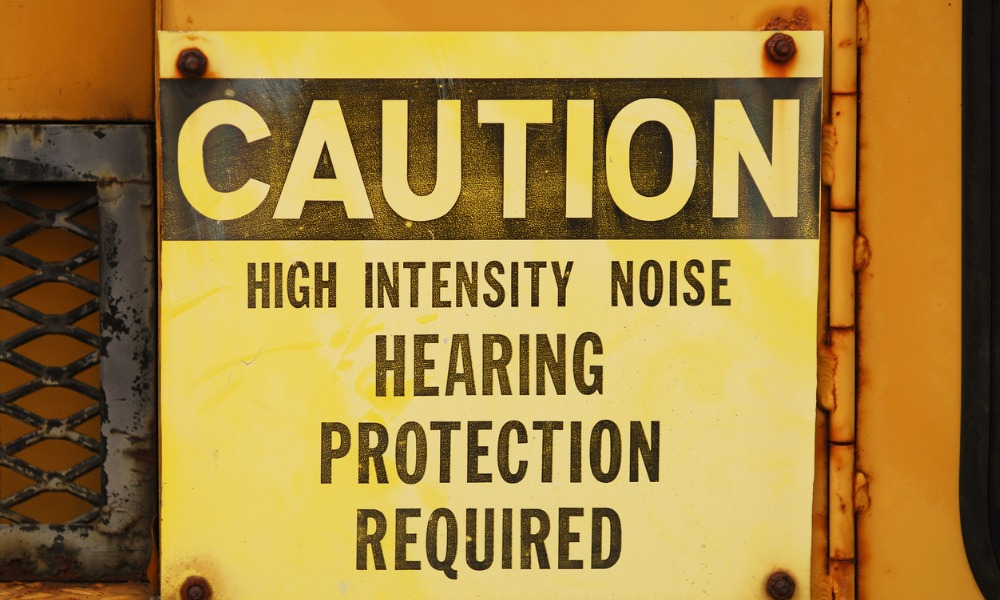And why hearing protection is a key bit of PPE for a range of workers

In June this year, a worker died after a workplace incident at the American Iron and Metal (AIM) recycling plant in Saint John, N.B. Though few details are available, sources say that the man was involved in some sort of explosion – and CBC reports that the company has been the subject of safety concerns, notably noise concerns, following repeated blasts at the plant.
Thousands of claims each year are tied to noise induced hearing loss (NIHL). As such, noise in the workplace can be a concern in many industries, affecting workers in heavy industrial and manufacturing environments, farms, concert venues and sometimes even bars and restaurants. This is why hearing protection is a key bit of PPE for workers in a range of industries.
“Using hearing protection that is appropriate for the noise level and making sure the fit and usage is correct can help prevent potential health outcomes such as temporary or permanent hearing loss, high blood pressure, and heart disease,” says Lin Yu, Occupational Health and Safety Specialist, Canadian Centre for Occupational Health and Safety (CCOHS).
In addition, Yu says that reducing noise exposure can also help lower stress and anxiety, improve productivity, and make sure communication and alarms that are essential for safety can be heard. And she says that if hearing protection is required, then a complete hearing conservation program should be implemented. “A hearing conservation program includes noise assessment, methods for controlling noise, hearing protector selection, employee training and education, audiometric testing, maintenance, inspection, record keeping, and program evaluation.”
To prevent health affects associated with noise exposure (like hearing loss), noise levels should be reduced. For most jurisdictions, the occupational noise exposure limit is 85 decibels (A-weighted) or dBA, but levels can vary so it’s always best to consult your jurisdiction’s occupational exposure limits for noise.
Hearing protection
Yu says that commonly used hearing protection devices generally fall into three categories: earplugs, semi-insert earplugs, and earmuffs. And when it comes to the choice of hearing protectors, it will depend on several factors – the level of noise, comfort, and the suitability of the hearing protector for both the worker and the environment should all be considered.
“It’s very important for workplaces to assess their risk for noise hazards to determine the level of hearing protection needed,” says Yu, and the effectiveness of hearing protection can be reduced if the hearing protectors do not fit properly or are not inserted or worn correctly.
Indeed, only wearing them periodically or removing them even for a short period of time can also increase the risk of developing hearing loss. “Like I mentioned earlier, having access to hearing protection that fits the worker properly is a key prevention factor and having choices between different types of hearing protection is always a great option,” says Yu.
She says that there are a number of other things that factor in when choosing hearing protection, for example, the temperature of the work environment. Also, is the type of protection chosen appropriate for the temperature and humidity of the work environment? Could it create additional hazards like not being able to hear alarms or verbal communication that is essential for safety? Those are just a few things to consider.
Hierarchy of controls
Yu points out that while hearing protection can be used to reduce noise exposure, workplaces should still follow the hierarchy of controls.” This hierarchy help workplaces prioritize control methods from the most effective level of protection to the least effective level of protection.”
She says that the surest methods of preventing noise-induced hearing loss are to eliminate the source or substitute with a quieter source, or to reduce noise at the source by engineering methods (e.g., reducing fan speed or damping vibrating surfaces).
Administrative control methods such as job rotation can also be used to reduce work exposure, says Yu. “However, when other control methods are not practicable, or not yet installed, workplaces may need to rely on hearing protectors to reduce the amount of noise reaching workers’ ears. Hearing protection can also be used in combination with other control methods to protect workers.”





